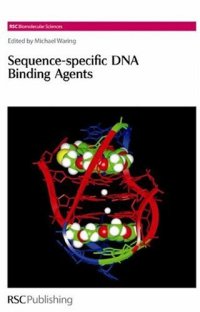
Ebook: Sequence-specific DNA Binding Agents
Author: Michael J. Waring
- Genre: Biology // Biochemistry
- Tags: Биологические дисциплины, Биохимия, Биохимия нуклеиновых кислот
- Series: RSC biomolecular sciences
- Year: 2006
- Publisher: RSC Publishing
- City: Cambridge
- Edition: 1
- Language: English
- pdf
Contents
Chapter 1. DNA Recognition by Triple Helix Formation
Chapter 2. Interfacial Inhibitors of Human Topoisomerase I
Chapter 3. Diversity of Topoisomerase I Inhibitors for Cancer Chemotherapy
Chapter 4. Slow DNA Binding
Chapter 5. DNA Gene Targeting using Peptide Nucleic Acid (PNA)
Chapter 6. Actinomycin D: Sixty Years of Progress in Characterizing a Sequence-Selective DNA-Binding Agent
Chapter 7. Thermal Denaturation of Drug–DNA Complexes: Tools and Tricks
Chapter 8. Computer Simulations of Drug–DNA interactions: A Personal Journey
Chapter 9. The Discovery of G-Quadruplex Telomere Targeting Drugs
Chapter 10. The Mechanism of Action of Telomestatin, a G-Quadruplex-Interactive Compound
Chapter 11. Structural Features of the Specific Interactions between Nucleic Acids and Small Organic Molecule
The binding of antibiotics and drugs to DNA is a fast developing area of research with important applications in medicine, particularly the treatment of cancer. Sequence-specific DNA Binding Agents uniquely discusses key aspects of this topic, providing a novel perspective on the subject.
Written by experts in the field, this book discusses diverse modes of binding of antibiotics and drugs to DNA, emphasising matters that are important or promising for cancer treatment. Chapters discuss established agents like actinomycin D but also look at novel drugs with strong potential in chemotherapy such as new topoisomerase inhibitors, telomerase inhibitors, peptide nucleic acids and triple helix-forming oligonucleotides. There are also sections discussing methodological advances including computational methods, slow kinetics, melting curve analysis and approaches to medicinal chemistry. Finally there is a section on RNA structure and its potential as a drug target.
The book is ideal for researchers in industry and academia who require a comprehensive source of reference to this rapidly expanding subject.